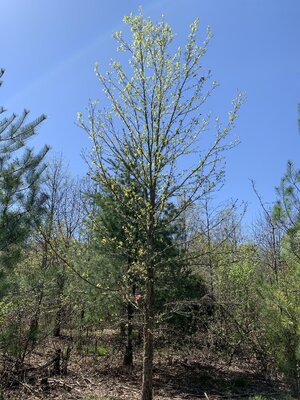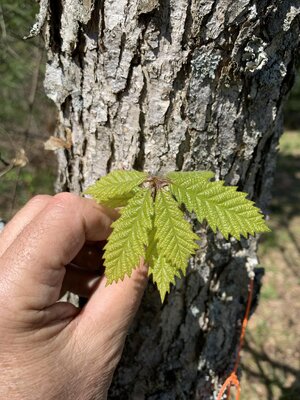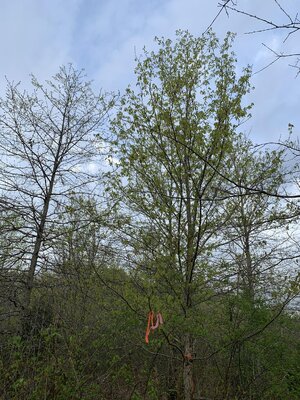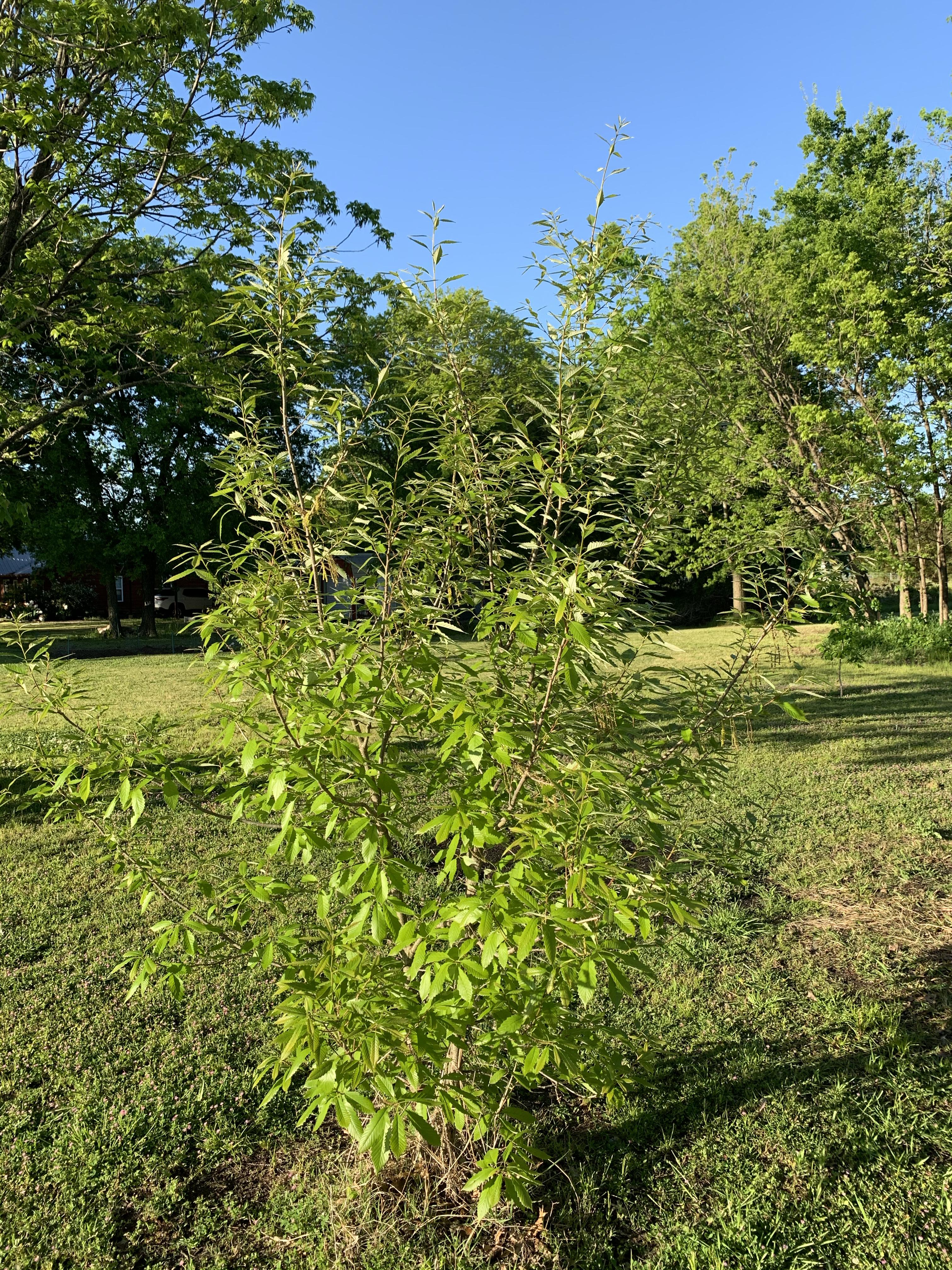Chinkapin Oak - Quercus muehlenbergii
I’m finding a lot of Chinkapin Oaks in my planting. This is a species that typically grows in dryer soils with limestone bedrock. The ones in the drier areas on my property are really doing great. The ones in the wetter spots have not grown as large as the ones in the better ground, but they still look very healthy.
The best ones are around 35 feet tall after 15-17 years and around 9 or 10 inches in diameter at the ground line. Below are some facts about the Chinkapin Oak:
· The acorns are at the top of the food preference list for many wildlife species. They ripen early and are very low in tannin. Some sources say that many trees will have acorns that humans can eat without leaching.
· I love this species and have noticed a few acorns in past years on some that I’ve passed by at the edge of the planting. Note – in the past I have not ventured out into the planting in the fall, because it is a sanctuary area.
· Does best in well-drained soil and adapts to many different soil types. Will grow well in higher PH soils than most other oaks.
· The chinkapin oak is also commonly referred to as a yellow chestnut oak, rock oak or yellow oak.
· The bark is very distinctive and has a yellow cast.
· Many leaves hang on through the winter, but not like Sawtooths.
· Hardiness Zones 4–7
· This is a very easy tree for me to ID – even in the winter. The bark and leaves are very distinct. The leaves resemble Swamp Chestnut Oak but they are much smaller.
· Starts greening up very quickly in spring.
Here is the USDA link:
Quercus muehlenbergii Engelm (usda.gov)
This is a nice one at the edge of the planting at a dry location. As you can see, it has outgrown the white pine next to it that was planted about the same time.

Here is another nice one near the one above. This tree is large and beautiful. This may be the one I remember seeing acorns on.

This picture shows the new emerging leaves and the bark. These leaves will look very similar when mature, just larger.

This is about average for the better trees:

This is a Chinkapin Oak surrounded by 6 Pin Oaks. One of the Pin Oaks is smaller than the CO, but another one is exceptionally larger. The other 4 are only slightly larger than the CO. You can see two of the Pin Oaks in the background and the CO in the foreground.

That’s about it guys except for one more thing – pretty sure that I’ve found some Dwarf Chinkapin Oaks (Quercus prinoides). I’ve been researching how to distinguish them from Q muehlenbergii, and when the leaves mature, I will report back on this - but let me know if you have any special keys on telling them apart other than size.






